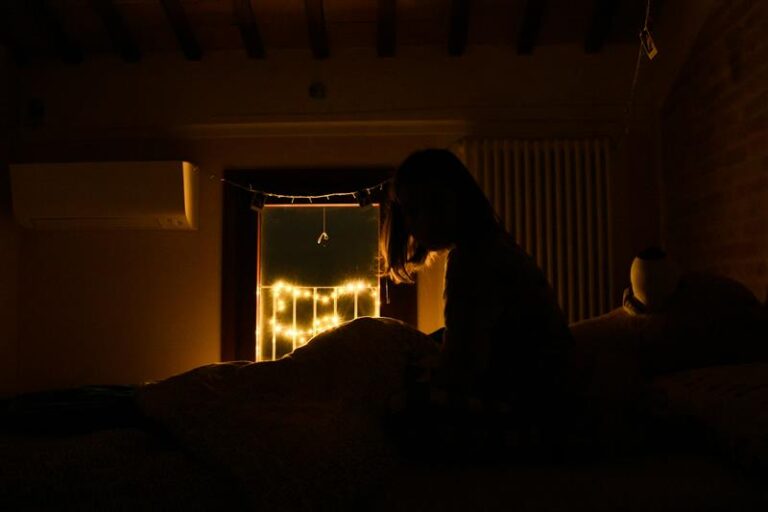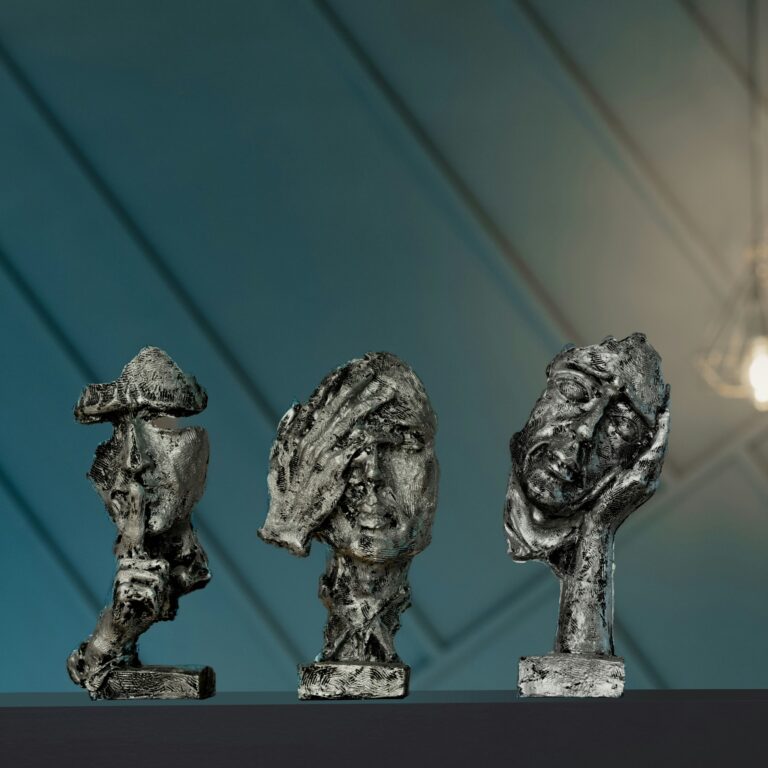Treatment-Resistant Depression: What Are Your Options?
You’re Not Alone If you’ve ever felt like you’ve tried everything for your depression—every pill, every dose change, every “give it a few more weeks”—only to feel like nothing’s working, you’re not alone. Maybe you’ve had this conversation before: “Let’s try switching your medication.” You nod. You want to feel better. But deep down, you’re already… Read more
Reviewed by The PsychPlus Team
Staff Provider at PsychPlus
April 22, 2025

You’re Not Alone
If you’ve ever felt like you’ve tried everything for your depression—every pill, every dose change, every “give it a few more weeks”—only to feel like nothing’s working, you’re not alone.
Maybe you’ve had this conversation before:
“Let’s try switching your medication.”
You nod. You want to feel better. But deep down, you’re already exhausted at the thought of starting over—again.
That’s the rollercoaster many people face when struggling with what’s known as treatment-resistant depression (TRD). It’s a term used when someone doesn’t respond to at least two different antidepressants taken at adequate doses and durations. But what that really means, in human terms, is you’re doing everything right, and it still feels like nothing’s changing. That’s frustrating. It’s disheartening. And it’s okay to say that out loud.
But here’s the good news: treatment-resistant doesn’t mean hope-resistant. It just means your brain might need something beyond the typical medication route—and those options do exist.
In this blog, we’re going to talk about those next steps. From TMS therapy to Spravato, we’ll explore innovative approaches that are changing the game for people with TRD. If you’re ready to stop spinning your wheels and start moving forward, keep reading.
And remember, you’re not doing this alone. At PsychPlus, we’re here to help you navigate this journey—no judgment, just support.
What Is Treatment-Resistant Depression?
Let’s break it down: treatment-resistant depression (TRD) happens when you’ve tried two or more antidepressants—at the right dose, for the right amount of time—and still don’t feel better.
You’re doing what you’re supposed to. But the sadness, the fog, the lack of motivation—it just doesn’t lift.
And it’s not because you’re doing anything wrong.
So, why does this happen?
There’s no one-size-fits-all answer, but a few common reasons include:
- Biology: Everyone’s brain chemistry is different. Some people simply don’t respond to certain meds.
- Other conditions: Anxiety, PTSD, or chronic pain can make depression harder to treat.
- Life stressors: Trauma, grief, or ongoing stress can overpower the effects of medication.
- Sleep, hormones, or lifestyle factors can also play a big role.
And you’re not alone in this. According to the National Institutes of Health, about 1 in 3 people with depression don’t get better with standard medication. That’s a lot of people quietly struggling, just like you.
💡 Want to understand more about depression and how it shows up in daily life? Check out our Depression 101 guide for a simple, supportive breakdown.
First Steps: Re-Evaluating Diagnosis and Lifestyle Factors
Before jumping into new treatments, it’s important to take a step back and look at the full picture. Sometimes, what feels like treatment-resistant depression isn’t just about the meds—it could be about something that’s been missed or overlooked.
Start with your diagnosis
TRD can sometimes be a sign that the original diagnosis wasn’t quite right. For instance, consider the following possibilities:
- Could it actually be bipolar disorder?
- Could thyroid issues be affecting your mood?
- Are there nutritional deficiencies, chronic pain, or hormone imbalances at play?
Your provider may suggest blood work, mental health screenings, or a full medication review. This isn’t to start over from scratch—it’s to make sure you’re on the right track.
Then, reassess daily life
We know—it’s not always easy. But the basics matter more than we often realize:
- Are you sleeping enough? Poor sleep can mimic or worsen depression.
- Are you eating regularly and nourishing your body?
- Is movement part of your week, even just a 10-minute walk?
- Are you staying consistent with therapy?
- Do you have people around you for support?
Sometimes it’s not about adding more medication—it’s about adjusting the approach. Think of it like rebalancing rather than restarting.
If you’re not sure where to begin, browsing through our Blog Page can help spark ideas and offer small changes that lead to big improvements.
TMS Therapy: A Drug-Free, FDA-Approved Option
If medications haven’t worked for you, the idea of trying yet another pill can feel… exhausting. That’s where Transcranial Magnetic Stimulation (TMS) comes in—a science-backed, drug-free treatment that’s offering real hope for people with treatment-resistant depression.
So, what is TMS?
TMS is a non-invasive therapy that uses gentle magnetic pulses to stimulate areas of the brain involved in mood regulation—specifically, the prefrontal cortex. It’s kind of like “waking up” parts of your brain that have gone quiet during depression.
And don’t worry—it doesn’t involve shocks or sedation. You stay fully awake and alert during each session.
Who is TMS for?
TMS is ideal for adults with treatment-resistant depression, especially those who:
- Haven’t had success with multiple antidepressants
- Are dealing with uncomfortable side effects from medications
- Prefer a drug-free, non-systemic alternative
Clinical studies have shown TMS to be highly effective, with many patients experiencing lasting relief after a full course of treatment.
Why patients love it:
- No meds required
- No major side effects (unlike typical antidepressants)
- Non-invasive – no needles, no downtime
- Covered by most insurance plans, including Medicare
What’s the commitment?
A typical TMS treatment plan includes:
- 5 sessions a week for about 6–8 weeks
- Each session lasts around 20–40 minutes
- You can drive yourself home right after
Many patients start noticing results by week 2 or 3—and some say it’s the first thing that has actually worked.
Curious if it’s right for you? Dive deeper into what to expect in our TMS Therapy: A Drug-Free Treatment for Depression blog post.
Spravato (Esketamine): Fast-Acting Relief for Major Depression
When you’re in the middle of a depressive episode—especially one that feels like it’s going nowhere fast—waiting weeks or months for a medication to work can feel unbearable. That’s where Spravato comes in.
So, what is Spravato?
Spravato is the brand name for esketamine, a nasal spray medication approved by the FDA specifically for treatment-resistant depression. It’s not your typical antidepressant. Unlike SSRIs that affect serotonin over time, Spravato works differently—and much faster.
How does it work?
Spravato targets the NMDA receptors in your brain—a completely different pathway than traditional meds. This unique approach helps restore synaptic connections that are often weakened during chronic depression, especially in people who haven’t responded to other treatments.
The result? Faster symptom relief —sometimes within hours or days.
Who is it for?
Spravato is especially helpful for:
- Adults with treatment-resistant depression
- Individuals struggling with thoughts of self-harm or suicidal ideation
- People who haven’t responded well to traditional meds
It’s not something you take home—it’s administered in a clinical setting, under professional supervision, which ensures both safety and proper monitoring.
What to expect:
A Spravato treatment session typically looks like this:
- You come into the clinic and self-administer the nasal spray.
- You relax in a private room for about 2 hours while your provider monitors you.
- You can’t drive afterward, so plan for a ride home.
Some people experience mild dissociation, dizziness, or nausea—but these effects usually fade quickly and are closely monitored by the staff.
Spravato has given many people new hope—especially those who’ve felt stuck for far too long. You can explore real experiences and more clinical details in our blog, A Closer Look at Spravato: The Fast-Acting Treatment for Depression.
Therapy + Medication Alternatives: The Combined Power
When depression is resistant to medication alone, it doesn’t always mean you’re out of options—it might just mean it’s time to try a new combination of care.
Studies—and real-life stories—show that pairing medication or alternatives like TMS or Spravato with psychotherapy can significantly improve outcomes. Why? Because while medications and treatments like TMS work on the brain, therapy helps with patterns, thoughts, and behaviors that fuel depression.
A few powerful therapy options to explore:
- CBT (Cognitive Behavioral Therapy): Helps you challenge negative thinking and reframe how you see yourself and your world.
- DBT (Dialectical Behavior Therapy): Great for emotional regulation and managing intense feelings—especially helpful if you’re feeling overwhelmed or reactive.
- EMDR (Eye Movement Desensitization and Reprocessing): Originally developed for trauma, but also helpful if your depression is rooted in past events.
Everyone’s path to healing looks a little different. Some people respond well to CBT alone, while others find real change only after combining therapy with something like TMS or Spravato.
The key is personalized, ongoing care. Having a provider who checks in with your progress, adjusts your plan when needed, and genuinely listens can make all the difference.
If you’re curious about how these combinations might work for you, we’ve got more insights and resources waiting for you over on our Blog Page.
Where to Go from Here: Take the Next Step
If you’ve been battling depression and nothing seems to work, we want you to hear this clearly: treatment-resistant depression does not mean you’re out of options—or hope.
Sometimes, the path forward just requires a different approach. That might be TMS, Spravato, therapy, or a personalized combination of treatments based on you—your history, your symptoms, your goals.
Reaching out to a mental health professional for a proper evaluation is one of the most important steps you can take. At PsychPlus, we specialize in helping people who’ve felt stuck and defeated finally find the care they need. We offer compassionate support, advanced treatment options, and a team that listens.
💬 Ready to explore what might work for you? Book an appointment with us today—either in-office or from the comfort of home.
Final Thoughts: There Is Hope
We know how heavy treatment-resistant depression can feel. But we also know that healing is possible—and it’s happening every day through breakthroughs like TMS and Spravato.
If you’re reading this, you’ve already taken a powerful step: you’re looking for answers. Now take the next one. Reach out. Ask questions. Try something new.
Because even when things feel dark, you’re not alone—and there are more ways forward than you might think.
Find a mental health care provider near you
Learn about the conditions we treat


